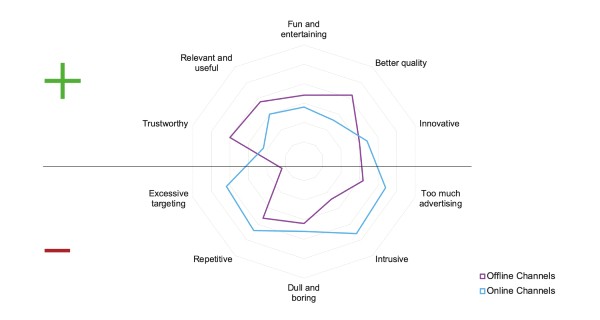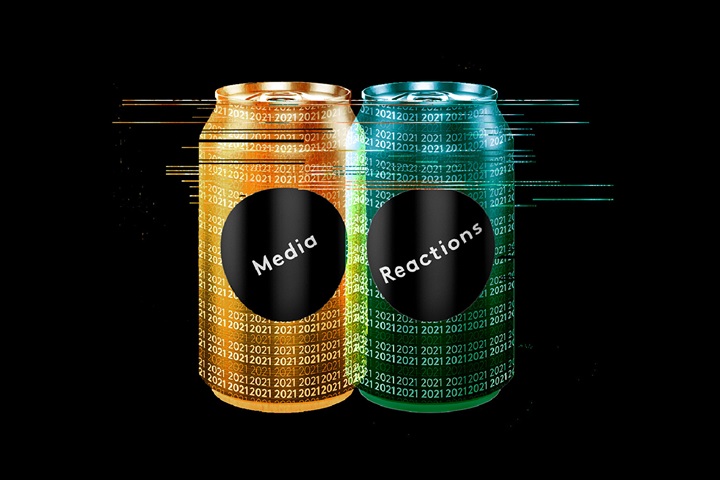Few issues could be more controversial or challenging today than the influence of media environments on advertising perceptions and outcomes. The media landscape that consumers and marketers must negotiate is complex. We are blessed with an incredible choice of media channels, brands and formats. This provides more ways to share, educate and engage people than ever before. Yet we grapple with difficult and highly politicised questions about brand safety, consumer privacy and freedom of speech.
The findings and insights from Kantar’s new Media Reactions 2020 study are critical for marketers and media brands looking to respond effectively to current circumstances and successfully strategise their way forward. Media Reactions is the industry’s first equity evaluation of a selection of global media channels and brands among both consumers and marketers, based on surveys of 4,000 consumers across seven major media markets and over 700 interviews with marketers worldwide (from advertisers, agencies and media companies).
Measuring audience attitudes towards advertising in each environment, our research includes detailed diagnostics of channel and media brand strengths and weaknesses. It helps advertisers make more informed placement decisions, and publishers and broadcasters to better position their media brands. Positive and negative assessments contribute to an overall ad equity metric and ranking - a useful guide for comparison between media settings.
The study has uncovered three media equity divides which the industry needs to address.
1. The online/offline divide
Online and offline media environments are viewed differently by audiences. Consumers prefer advertising in offline channels such as cinema, sponsored events, and print, more than ads in online channels. They generally perceive offline advertising as more trustworthy and better quality, and online advertising as more intrusive and excessively targeted.
However, we see a very different picture when we ask about ads in specific media brand environments. Here we see users rating ads in their online brands much more positively. Among brands measured in multiple markets, TikTok tops the inaugural Media Reactions ad equity rankings, followed by Instagram and Snapchat. Viewers of ads in these younger media brand environments consider them to be more fun, relevant and innovative, and they suffer less from perceived saturation than some more established media brands.
The contextual frame of the advertising environment sets the scene for content evaluation, influencing viewer perceptions. Advertisers need to be careful to match brand aspirations and advertising goals to consumer receptivity and channel attitudes, for example by carefully monitoring frequency in environments which are considered more repetitive and saturated.
Attitudes towards advertising in offline versus online media channels

2. The consumer/marketer divide
Advertiser preferences for ad formats and platforms differ markedly from consumers. Media Reactions shows that advertisers favour online formats over offline. They prefer online video ads, TV ads and social media news feed ads. Differences of opinion extend to the specific attributes of each format. Marketers trust all formats more than consumers, but especially online video. Consumers consider TV and online video to be far more innovative than marketers, who see podcast ads and streaming TV as more cutting edge.
Amongst global digital media brands, marketers prefer the more established platforms such as YouTube, Google and Instagram, perhaps due to greater familiarity with running campaigns in these spaces. Managing this divide therefore requires marketers to constantly re-evaluate their own assumptions. While they may be comfortable working with particular media partners, advertisers and agencies should constantly assess whether those platforms remain relevant for their target audience. And media platforms must work to strategically deliver a critical balance of returns to both marketers and consumers, through format innovation that entertains.
3. The brand equity/ad equity divide
Not all advertising in a given media channel environment, whether offline or online, is viewed in the same way as the platform brand itself. There is a reasonable correlation, but also some interesting outliers. Some media brands such as TikTok have advertising approaches that are viewed more positively than we would expect given their brand stature. In other cases, users of some well-loved brands don’t rate the advertising they see there in such a positive light. Factors such as ad saturation, intrusiveness and over-targeting can diminish ad receptivity and dilute the relationship between brand equity and ad equity. If these concerns aren’t addressed, they could eventually undermine how frequently people use a particular platform.
Although some media environments lead the Media Reactions rankings, there are no perfect heroes. The characteristics of media brands vary considerably, along with their likely ‘medium as message’ halo effects. What is ‘good’ is ultimately what is appropriate for the brand being advertised, but it is likely that more clearly defined media brand characteristics will enable stronger transference. We generally see news brands and TV broadcasters sharing more ‘serious’ personalities, while social media and streaming video brands are considered more ‘fun’, but there are important nuances which further separate the brands.
Media brands that are careful to manage the desires of audiences with the expectations of marketers can maintain brand equity, while sustaining and growing revenues. And advertisers and agencies who understand the variable attitudes to channels, formats and media brands can more selectively align their media investments. With the pandemic recession foreshadowing challenging times ahead, knowing how to create positive media reactions will be a key component to optimising ROI and creating the sustainable advertising environments of the future.
For more information, download our complimentary summary and please join our webinar exploring the findings in more detail. And get in touch to find out about the in depth reports available for sale.


